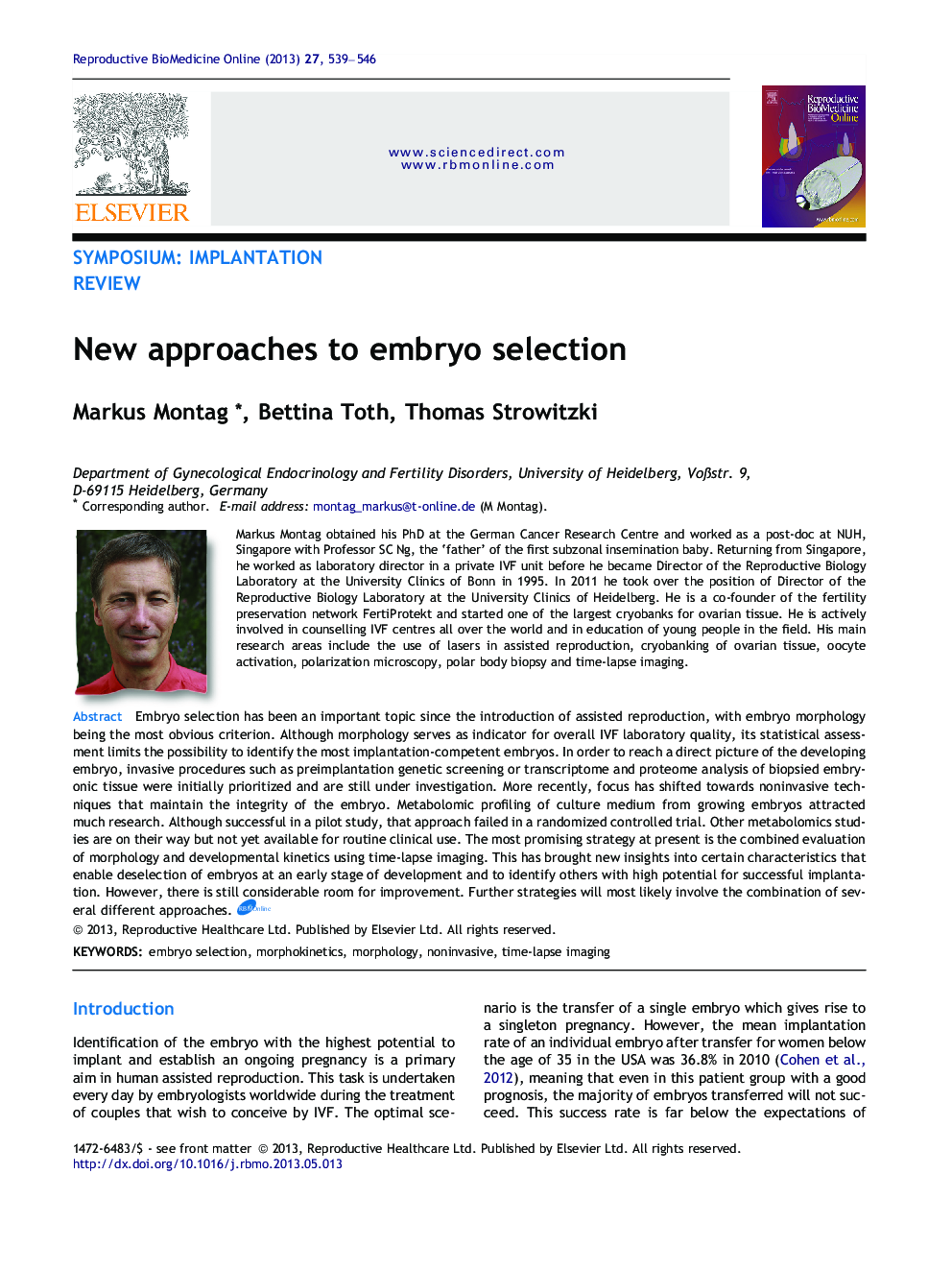| Article ID | Journal | Published Year | Pages | File Type |
|---|---|---|---|---|
| 3970498 | Reproductive BioMedicine Online | 2013 | 8 Pages |
Embryo selection has been an important topic since the introduction of assisted reproduction, with embryo morphology being the most obvious criterion. Although morphology serves as indicator for overall IVF laboratory quality, its statistical assessment limits the possibility to identify the most implantation-competent embryos. In order to reach a direct picture of the developing embryo, invasive procedures such as preimplantation genetic screening or transcriptome and proteome analysis of biopsied embryonic tissue were initially prioritized and are still under investigation. More recently, focus has shifted towards noninvasive techniques that maintain the integrity of the embryo. Metabolomic profiling of culture medium from growing embryos attracted much research. Although successful in a pilot study, that approach failed in a randomized controlled trial. Other metabolomics studies are on their way but not yet available for routine clinical use. The most promising strategy at present is the combined evaluation of morphology and developmental kinetics using time-lapse imaging. This has brought new insights into certain characteristics that enable deselection of embryos at an early stage of development and to identify others with high potential for successful implantation. However, there is still considerable room for improvement. Further strategies will most likely involve the combination of several different approaches.During ovarian stimulation for assisted reproduction, there is a difference in the implantation ability of the individual embryos. Numerous approaches have been proposed in order to identify embryos that are most likely to result in a pregnancy. Some were simply based on the daily observation of embryo growth at static time points whilst others were based on invasive procedures to investigate part of the embryo by cytogenetic or molecular biological methods. However, these approaches have so far not resulted in a major breakthrough. More recent strategies are aimed at applying non-invasive technologies to completely avoid interference with the embryo’s developmental competence. Some are look at by-products of the metabolism of the embryo by indirect means; however, there is as yet no commercial device globally available that may be used in clinical routine. The only technology that is already impacting the field of embryo selection is time-lapse imaging. It enables the documentation of morphological changes over time, a so-called morphokinetic analysis. Following the course of embryo development from the oocyte up to the blastocyst stage allows for a very detailed evaluation of key events or key time-points associated with implantation or with failed implantation. Although the perfect tool has not been developed, the existing strategies may already help in identifying the single embryo with the highest probability to succeed.
